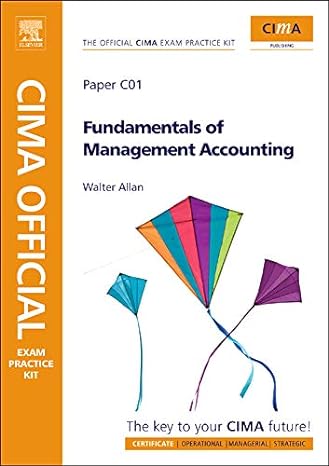Answered step by step
Verified Expert Solution
Question
1 Approved Answer
2. By law ACME is required to accept the system from customers when the customer wants to dispose of it. ACME has arranged to accept
2. By law ACME is required to accept the system from customers when the customer wants to dispose of it. ACME has arranged to accept systems through its network of retailers who ship the systems to them at their cost. ACME then pays a vendor to haul the systems away and dispose of it. Currently ACME pays 2.15 for each system to be disposed. An alternate disposal option is to set up floor space to disassemble the systems into parts and to sell working items, recycle a portion of uncontaminated items, and to dispose of items not otherwise sold or recycled. Disposal cost is expected to be lower in this option for many parts because once removed the part is viewed as general waste and not as industrial waste. ACME incurs a disassembly or separation cost of 2.30 per system, a cost clearly more than the full system disposal cost now paid. Using the text defined method for revenue retrieval at time of disposal as an example modified by the guidance given in this problem conduct an analysis of the product design below and answer the questions posed. All revenue and cost are per part unit. Revenue listed is raw selling price and does not include cost associated with preparing unit for resale or for recycling which is at the system level. So the upfront cost before any of the revenue below can be made and the disposal at a part level done is the disassembly cost. ACME must decide the economics of being a better industrial citizen. Unit Percent Part Resale of Part Revenue Resold Unit Recycling Revenue Percent of Cost to Dispose Part Recycled Part not Sold or Recycled A 0.96 40 0.42 30 0.06 B 0.95 45 .90 20 0.22 C 0.79 60 .21 25 0.12 D 1.59 50 0.71 10 0.14 E 0 0 0 0 0.09 a) If 100 percent of all parts were resold, what is the total revenue per system unit (all 5 parts of the system) ignoring any cost associated with disassembly and ignoring that part E can only be disposed? b) What is the average per part revenue for Part D applying the percentages shown for resell and recycle ignoring any costs associated with disassembly or disposal? c) What is the average per part net revenue for Part D after subtracting disposal cost ignoring disassembly cost? d) What is the average net revenue per system unit (all parts) applying the percentages of resold, recycled, and disposed and after subtracting the disassembly cost? If the revenue is negative place a negative sign in front of your
Step by Step Solution
There are 3 Steps involved in it
Step: 1

Get Instant Access to Expert-Tailored Solutions
See step-by-step solutions with expert insights and AI powered tools for academic success
Step: 2

Step: 3

Ace Your Homework with AI
Get the answers you need in no time with our AI-driven, step-by-step assistance
Get Started


